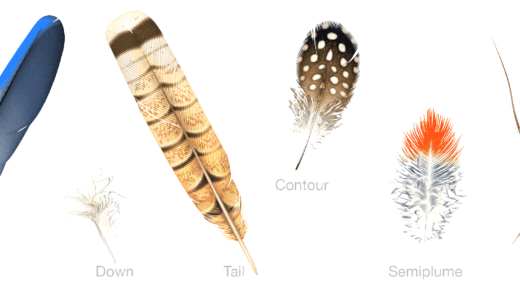NASCAR in-car cameras enhance viewer engagement by providing a unique perspective of the race. They have evolved from basic devices to advanced technology that captures high-definition footage and integrates real-time data. Safety measures ensure the cameras withstand the rigors of racing, while teams utilize the footage for performance analysis. Fun facts highlight the cameras’ history and their immersive audio-visual experience.
What Are NASCAR In-Car Cameras
NASCAR in-car cameras are specialized devices installed within race cars to capture the thrilling action from the driver’s perspective. These cameras serve multiple purposes: they provide fans with a unique view of the race, enhance broadcast coverage, and offer teams critical insights for performance analysis. By positioning these cameras inside the car, viewers can experience the high-speed excitement and intense moments that drivers face on the track.
The History of In-Car Cameras
The journey of in-car cameras in NASCAR began in the late 1980s. Initially, these cameras were basic and provided limited footage. Over the years, advancements in technology have transformed them into sophisticated devices capable of capturing high-definition video. The introduction of in-car cameras revolutionized the way fans engage with NASCAR, allowing them to feel closer to the action than ever before.
How NASCAR In-Car Cameras Work
NASCAR in-car cameras utilize advanced technology to capture video footage during races. The cameras are equipped with high-resolution sensors and durable casings to withstand the extreme conditions of racing. They connect to the car’s data systems, enabling real-time video transmission to broadcast networks. This process involves encoding the video and sending it via wireless signals, ensuring viewers receive a live feed of the race from the driver’s seat.
Types of Technology in Use
Various technologies are employed in NASCAR in-car cameras to enhance video quality and reliability. These include:
- High-definition sensors: Provide clear and detailed images.
- Wireless transmission systems: Ensure live video feeds reach broadcasting teams without delays.
- Shock-resistant housings: Protect cameras from vibrations and impacts during races.
- GPS integration: Allows teams to overlay data such as speed and location on the footage.
By combining these technologies, NASCAR in-car cameras create a captivating viewing experience that enhances the overall excitement of the race.
How Teams Utilize Footage
NASCAR teams leverage in-car camera footage to gain a competitive edge. The NASCAR in-car cameras provide invaluable insights during races and post-race analyses. Teams analyze footage to assess driver performance, car handling, and strategic decisions. This video data helps in identifying areas for improvement.
Here are some ways teams utilize this footage:
- Performance Analysis: Coaches and engineers review in-car footage to understand how drivers navigate turns, brake, and accelerate.
- Strategy Development: Teams use past race footage to develop strategies for upcoming races, identifying successful maneuvers and pit stop timing.
- Driver Training: New drivers can learn from seasoned racers by watching their in-car footage, gaining insights into racecraft and decision-making.
This continuous analysis not only enhances team performance but also shapes the future of NASCAR in-car cameras technology, ensuring that every race is an opportunity for growth.
Challenges Faced by In-Car Cameras
NASCAR in-car cameras face several challenges that can impact their effectiveness. The extreme conditions of racing present unique difficulties, including:
- Visibility: Dust, rain, and debris can obstruct camera lenses, compromising footage quality.
- Durability: Cameras must withstand high speeds and vibrations, risking damage during collisions or harsh maneuvers.
- Wireless Signal Interference: The fast-paced environment can lead to signal loss, resulting in interrupted live feeds.
Despite these challenges, teams and manufacturers continuously work on improving the technology. Innovations in camera design and data transmission are essential to overcome these obstacles, ensuring that fans and teams alike receive the best possible footage.
Enhancing Viewer Experience
NASCAR in-car cameras significantly enhance the viewer experience, making races more engaging. These cameras offer a first-hand perspective that immerses fans in the action. Viewers can feel the thrill of speed and the intensity of competition right from their homes.
Key benefits of in-car cameras include:
- Real-Time Action: Fans witness critical moments as they unfold, capturing the adrenaline rush of overtakes and tight turns.
- Driver Perspective: The unique viewpoint allows fans to empathize with drivers, understanding their challenges and decision-making processes.
- Storytelling: In-car footage adds a narrative layer to races, showcasing the emotional journey of drivers throughout the event.
By integrating NASCAR in-car cameras into broadcasts, the sport continues to captivate audiences, ensuring that the excitement of racing reaches new heights.
Safety Measures for Camera Equipment
NASCAR in-car cameras are designed with safety as a top priority. To ensure the equipment can withstand the harsh environment of a race, several precautions are implemented. Firstly, the cameras are housed in shock-resistant casings that protect them from vibrations and impacts during high-speed maneuvers. Secondly, the installation of the cameras is carefully planned to avoid interference with the driver’s performance and to keep the equipment secure during crashes.
Additionally, regular maintenance checks are conducted to ensure the cameras function correctly. This includes testing the wireless transmission systems to prevent signal loss, which can occur due to the extreme conditions of racing. Moreover, teams are trained to handle the equipment properly, minimizing the risk of damage. These safety measures not only protect the cameras but also ensure that the footage captured remains reliable and high-quality.
Evolution of Technology
The evolution of NASCAR in-car camera technology reflects the advancements in both racing and filming techniques. Initially, these cameras were bulky and offered limited footage. Today, the integration of high-definition sensors and wireless technologies has transformed them into lightweight, high-performance devices. For instance, the latest models can capture 4K video, providing viewers with stunning clarity.
Moreover, the addition of GPS technology allows for real-time data overlays, enhancing the viewer experience by displaying speed and location on the footage. As technology continues to advance, NASCAR teams are constantly exploring new methods to improve camera performance and reliability. This ongoing evolution not only benefits the teams but also enriches the fan experience, making every race more thrilling.
Fun Facts About In-Car Cameras
NASCAR in-car cameras come with some interesting tidbits that fans may not know. For example, did you know that the first in-car camera was introduced in 1986? It captured the excitement of racing from inside the car, changing how fans experienced the sport. Another fun fact is that during a race, the cameras can transmit live footage in less than a second, providing real-time action to viewers at home.
Additionally, these cameras are often equipped with microphones that capture not just the visual elements but also the sounds of the race, including engine roars and driver communication. This immersive experience helps fans feel as if they are right in the middle of the action. Lastly, the footage captured can be used for more than just broadcasting; it serves as a valuable training tool for drivers, helping them improve their techniques and strategies.





Comments are closed.